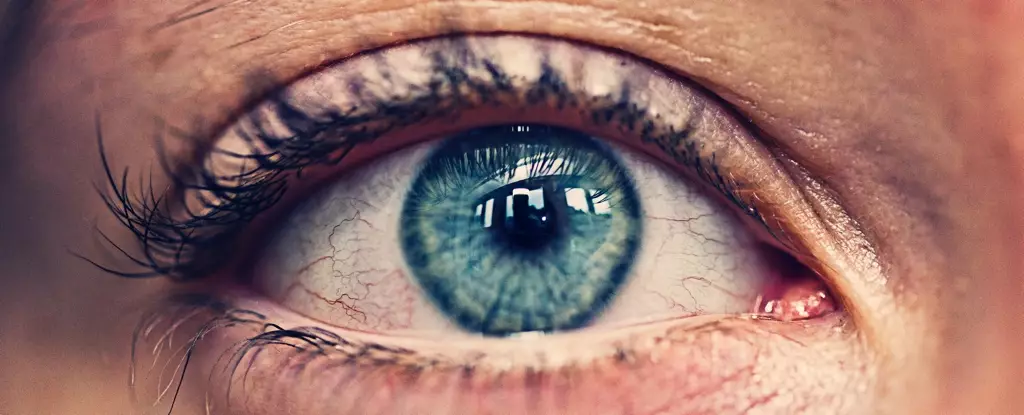The phenomenon of climate change extends beyond rising temperatures and erratic weather patterns; it infiltrates our health, particularly in ways we might not readily recognize. One glaring example is the growing link between climate change and eye health, manifesting in an alarming uptick of conditions like cataracts and conjunctivitis, particularly among vulnerable populations. Stories like that of Alka Kamble, a farmworker in Maharashtra, India, serve as a testament to the human cost of our changing climate. Kamble’s experience shines a light on the intersection of labor, health, and environmental degradation—problems that are becoming increasingly intertwined as global temperatures climb.
The Realities Faced by Agricultural Workers
Farmers like Kamble face an unprecedented dual threat: the demands of their labor and the harshness of environmental conditions. Overexposure to UV radiation, a dazzling yet potentially harmful companion of sunny days in the fields, contributes significantly to eye diseases. Kamble battled her vision issues for months, weighed down by the burden of work and the high cost of medical care. Her story reflects a broader tragedy; countless agricultural workers toil under grueling conditions and receive piecemeal medical attention only when their ailments become unbearable. The systemic neglect of such populations not only exacerbates their health problems but also underscores the urgent need for systemic changes in how we approach healthcare and labor rights.
Climate Change: A Catalyst for Vision Impairment
Scientific investigations have unearthed several mechanisms through which climate change exacerbates eye health conditions. The obvious culprits include increased UV exposure and extreme heat, which have shown a direct correlation with cataract development. Physicians like Lucía Echevarría-Lucas underscore the urgency of these findings. As body temperatures soar past critical thresholds, the eyes become vulnerable, unable to combat the assault of reactive oxygen species that precipitate cataract formation. With predictions indicating that the Earth’s average temperatures will continue to rise, the consequences for eye health are profound.
Moreover, as the planet warms, behavioral changes emerge—people venture outdoors more, exacerbating their exposure to harmful UV rays. Regions where dry wind conditions prevail experience particularly acute UV exposure, compounding the risks even further. It is chilling to consider that while climate change invites new opportunities for outdoor experiences, it also lays the groundwork for significant health crises.
The Expanding Array of Eye Conditions Linked to Climate Change
The detrimental impacts of climate change on eye health extend beyond cataracts. Other conditions such as keratitis and pterygium have been increasingly linked to environmental shifts. Youth populations, traditionally believed to be less susceptible to such issues, are now experiencing a higher incidence of these eye conditions. For instance, recent studies reveal that temperature surges can increase conjunctivitis risk, demonstrating that climate change is reshaping the landscape of eye health across all demographics.
In urban settings, the problems multiply—prolonged exposure to irritants from drought and polluted waters has been shown to elevate the risks of eye infections, adding yet another layer of complexity. It’s clear that the repercussions of climate change on our ocular health are multi-faceted, necessitating a holistic approach to both environmental and public health policies.
Proactive Solutions: Protecting Our Vision Amidst Climate Challenges
Addressing the looming threat of climate change on eye health must begin with proactive measures. Educating outdoor workers and providing protective gear, such as UV-filtering sunglasses and wide-brimmed hats, can significantly mitigate risks. Countries that face the brunt of these environmental challenges might benefit from implementing national programs aimed at enhancing eye care accessibility—initiatives like India’s National Programme for Control of Blindness could act as a template for other regions grappling with similar dilemmas.
Additionally, increasing awareness about the links between nutrition and eye health is crucial. A diet rich in antioxidants and essential vitamins can bolster one’s defenses against oxidative stress caused by environmental pollutants. Encouraging these lifestyle changes in tandem with medical solutions could arm populations with the tools they need to combat climate-induced eye problems.
Broadening the Conversation: A Collective Responsibility
This multifaceted crisis demands more than individual action; it requires a concerted global effort. Governments must take the lead in mitigating climate change by reducing greenhouse gas emissions and putting forth policies that protect the fragile ecosystems intersecting with human health. Meanwhile, healthcare professionals and communities alike should prioritize education and outreach about the health risks tied to environmental changes.
Ultimately, the story of Alka Kamble is not merely an isolated case; it reflects a growing global imperative. While immediate solutions may be challenging, it is our collective responsibility to act decisively and protect the eyes—and wellbeing—of future generations as we confront the sprawling consequences of climate change. The health of our planet and our vision are intricately linked, and addressing one without the other is no longer an option.


Leave a Reply